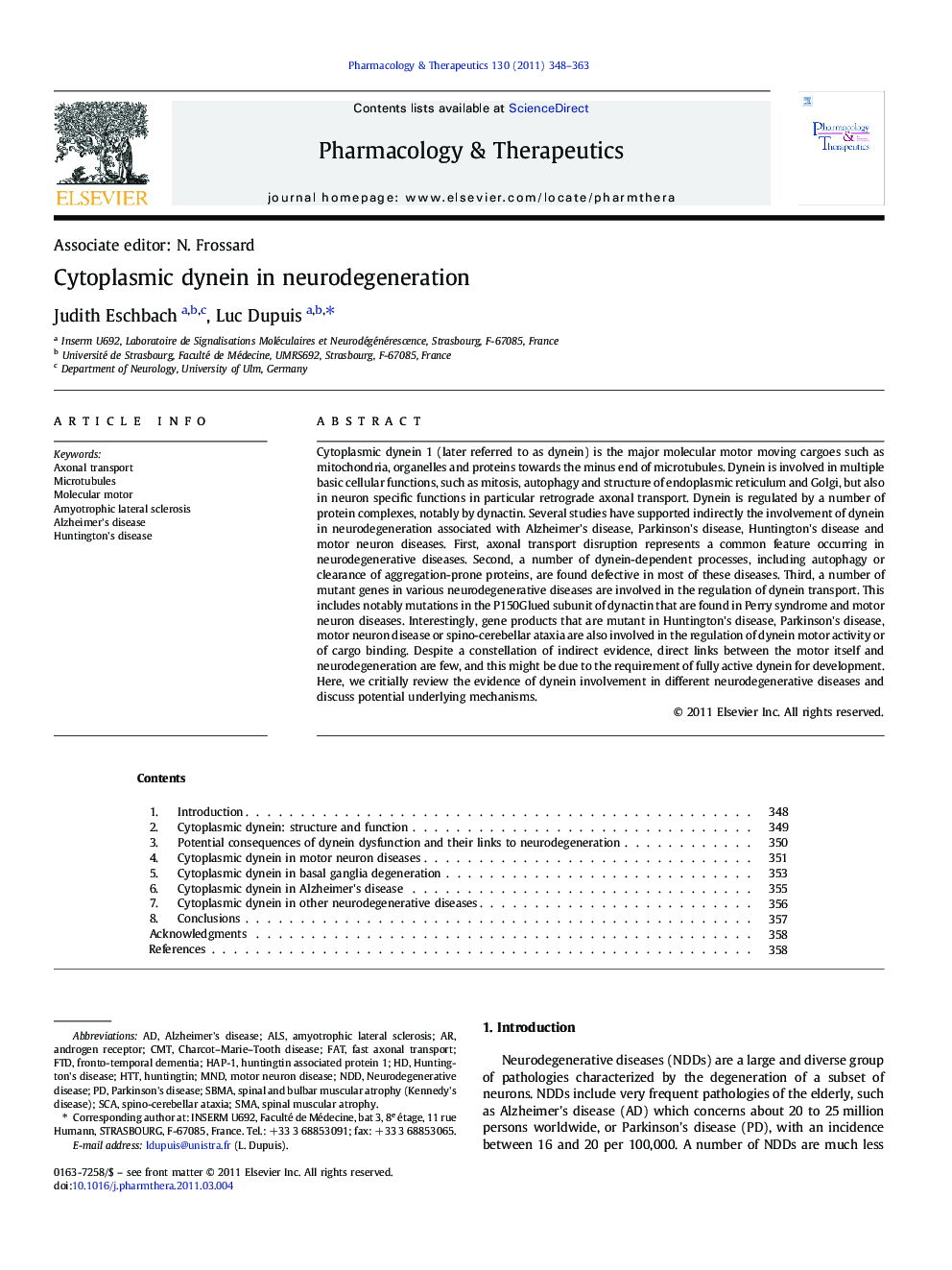| Article ID | Journal | Published Year | Pages | File Type |
|---|---|---|---|---|
| 2563418 | Pharmacology & Therapeutics | 2011 | 16 Pages |
Cytoplasmic dynein 1 (later referred to as dynein) is the major molecular motor moving cargoes such as mitochondria, organelles and proteins towards the minus end of microtubules. Dynein is involved in multiple basic cellular functions, such as mitosis, autophagy and structure of endoplasmic reticulum and Golgi, but also in neuron specific functions in particular retrograde axonal transport. Dynein is regulated by a number of protein complexes, notably by dynactin. Several studies have supported indirectly the involvement of dynein in neurodegeneration associated with Alzheimer's disease, Parkinson's disease, Huntington's disease and motor neuron diseases. First, axonal transport disruption represents a common feature occurring in neurodegenerative diseases. Second, a number of dynein-dependent processes, including autophagy or clearance of aggregation-prone proteins, are found defective in most of these diseases. Third, a number of mutant genes in various neurodegenerative diseases are involved in the regulation of dynein transport. This includes notably mutations in the P150Glued subunit of dynactin that are found in Perry syndrome and motor neuron diseases. Interestingly, gene products that are mutant in Huntington's disease, Parkinson's disease, motor neuron disease or spino-cerebellar ataxia are also involved in the regulation of dynein motor activity or of cargo binding. Despite a constellation of indirect evidence, direct links between the motor itself and neurodegeneration are few, and this might be due to the requirement of fully active dynein for development. Here, we critially review the evidence of dynein involvement in different neurodegenerative diseases and discuss potential underlying mechanisms.
